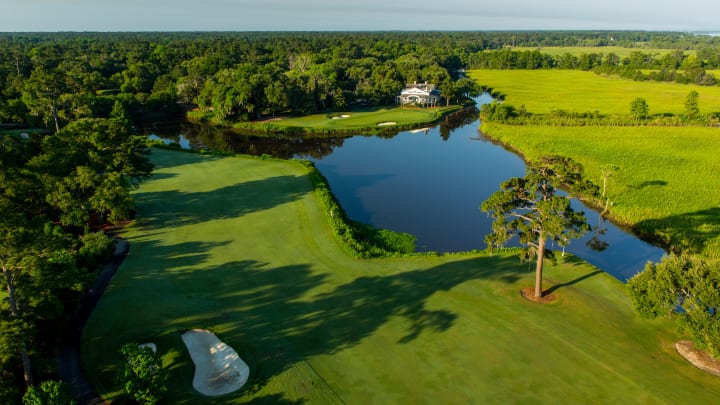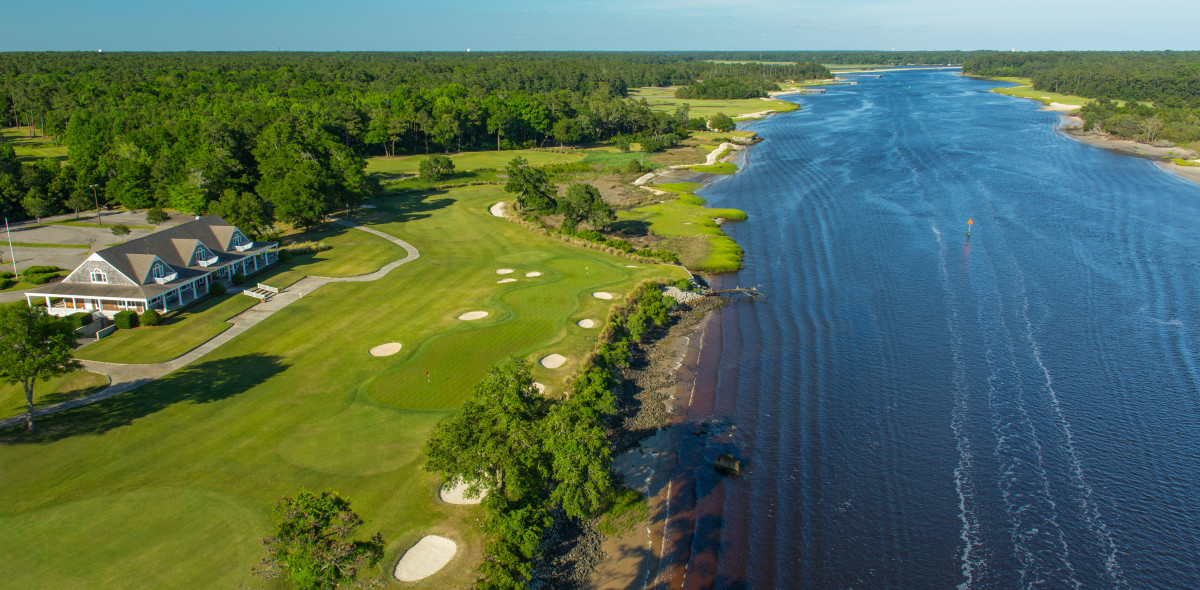Grand Strand Golf Experiencing a Grand Resurgence

MYRTLE BEACH, S.C. — Myrtle Beach golf is a lot of things to a lot of people. Its sheer volume — more than 80 courses along a 60-mile stretch of mostly coastal plains and wetlands affectionately dubbed The Grand Strand — has attracted Canadian and Northeast golfers since the late 1950s.
And now the packaging paradise has added another notch to its proverbial golf belt — a rebirth of sorts after a decade of contraction and consternation over where the brand was heading.
With a younger demographic engaging in golf, Myrtle Beach has stepped up its digital and social media campaign through the COVID-19 years and now into 2022, opening this spring a new PlayGolfMyrtleBeach.com digital studio, a state-of-the-art multimedia facility located within the Barefoot Resort golf footprint to help spread the word.
Among numerous items, the studio is used to produce the Charlie Rymer Golf Show, which airs on ESPN2, along with interviews with influential figures within the golf course community in which marketing executives can use on social media and beyond.
Rymer moved from Orlando and Golf Channel to Myrtle Beach three years ago.
"The thing I really like about Myrtle Beach golf is when you start looking at the equation of the quality that you get and then look at the economic side what we deliver I will take that toe-to-toe with anything else in the world,” said Rymer, who grew up in Fort Mill, South Carolina, and played college golf at Georgia Tech before heading to the PGA Tour. “I tell people there are some places that are really cool to go to, and I’ll pick on Pebble Beach a little bit for a second. If you go to Pebble Beach for a week to play golf you better hope it’s going on a corporate credit card. If you are going somewhere to play golf for a week and it’s going on your own credit card Myrtle Beach is very appealing. You just can’t beat it.”
The Golf Capital of the World — as marketing folks like to call the area — once fielded a roster of over 110 golf courses. That impressive number began to shrink rapidly starting in 1999 as developers started plowing course-after-course under for real estate dollars.
“Our land here from a development standpoint went bump, bump, bump,” says Tracy Conner, president of the Myrtle Beach Area Golf Course Owners Association.
The first development bite was to Gator Hole in North Myrtle Beach, and now that number is more than three dozen, according to Conner. In fact, one course — Belle Terre — opened and closed just within a six-year period, gobbled up by new Highway 31.
"Gator Hole had an unbelievable driving range and did an unbelievable business right on Kings Highway, but that golf course sold for retail and some residential on the back end," he says. “What the developers were after was the location. To them a golf course was a piece of undeveloped property. They looked at that golf course differently than they did a retail establishment. If there was a Kmart there for 30 years and somebody came and plowed it down and built something else nobody would care, no one even thought about it, but there were connections to those golf courses.
“The 38 courses that have been developed since (1999) have had very little to do with their bottom line or their P and L, it had everything to do with their location and their zoning. That’s what drove what golf courses were developed or not, not whether they made money or lost money.”
At the same time, Myrtle Beach vacationers were aging out, which suddenly created a new golfing demographic that increased drastically — local play.

“We were building golf courses in the 1980s and ‘90s and we filled them up each and every year — the volume of golfers was crazy,” Conner says. “And then Tiger came along in the late 1990s to give us another little shot in the arm and then really in the early 2000s it started to back up just a little bit. That was the result of our best customers that came down year-after-year who got to retirement age in the Northeast, and guess what, they moved to Myrtle Beach, and that began our transformation. They would land here and join a club or a group of clubs so rather than paying the tourist rate now they are locals and they are paying a lot less than in previous years. It wasn’t insignificant; it was a huge influx that happened when there was that housing boom that ran right up until 2008.”
Conner says, on average, 44 people now move to Horry County, South Carolina — the meat of the Grand Strand — every day, and he believes the golf course contraction has leveled off. And in a strange way, has been good for the golf business in the area.
“The growth is moving more inland and the golf business has gotten much stronger, so if you own a golf course in a great location and have it zoned properly, now is not the time to sell,” Conner says. “Say your 150 acres of golf course that was worth $10 million back then, maybe today is worth $12 million, but if you could wait another 10 years it will likely be worth $25 million.”
“During the golf boom people were building golf courses left and right here, and in hindsight it was too many,” adds Kyle Oland, director of digital marketing at Golf Tourism Solutions, the marketing arm for Myrtle Beach golf. “The courses that needed to close have closed, which isn’t necessarily the worst thing, maybe a bottom tier course that wasn’t played as much closed and now you’re taking those rounds and putting them on another course. We’re seeing more people wanting to play, more people wanting to visit Myrtle Beach, and more people coming from different areas that we’ve never seen before, like from the Midwest and West. Southwest Airlines just came in to our airport within the last year, which is huge for us. More access is creating more opportunity.”
There is also another phenomenon occurring with Myrtle Beach golf this summer.
“The great thing about Myrtle Beach is we’ve about a day’s drive from 60 percent of the population in the United States,” Conner said. “When gas prices spike, historically tourism in Myrtle Beach spikes and that doesn’t make any sense, but what happens is our friends in the Northeast and Canada that go to Florida can cut the price in half and just stop in Myrtle Beach. We don’t want to jump over our skis, but we’ve very hopeful and all signs look to having a very good golf season in 2022.”
